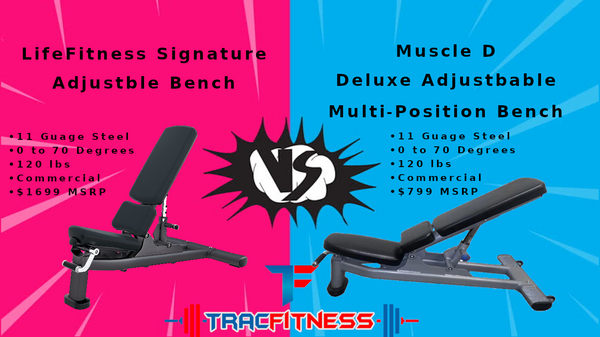If you’re new to the fitness equipment industry, chances are this is the first time you’re reading about this. The classic debate about commercial vs residential grade gym equipment goes back to the 80s when home gym equipment was manufactured to a higher degree than it is now.
Let’s break down the common myths about commercial grade gym equipment and residential grade gym equipment.
What Defines Commercial Gym Equipment?
Commercial gym equipment refers to the grade to which equipment is manufactured. When equipment is being manufactured, the manufacturer has to decide on the thickness and grade of the steel, the quality of the paint, the type of padding, and the overall design of the equipment.
Depending on the specification during the manufacturing process, the product is subject to different tests to determine whether it can be used at home or at commercial facilities.
What Is the Biggest Difference?
The simple answer is the cost to manufacture the product. Commercial grade equipment is manufactured with different or higher grade components which results in the equipment lasting longer under everyday continuous use from multiple users.
Residential grade equipment is typically manufactured with inexpensive materials and is intended for moderate use by 1 or 2 people.
Commercial vs Residential Gym Equipment
One of the clearest examples on the difference between commercial and residential gym equipment is with indoor cycling bikes.
Indoor cycling bikes are divided in two sections: residential and commercial. And while they may look and feel nearly identical, the manufacturing process is very different.
One of the obvious differences in residential bikes is the use of plastic. Many residential bikes will use plastic foot caps and plastic on the frame. Commercial bikes will almost never use plastic since they are being used in a heavy-use facilities (gyms, cycling studios, etc.). They are built to withstand abuse and everyday use.
Commercial bikes will also have chains or belts that do not wear out as frequently.
One of the main differences is commercial bikes have a huge market for aftermarket and original parts. This means they are easier to maintain and repair if the warranty time period has expired.
Warranty
The warranty is one of the deciding factors in the battle between residential and commercial bikes.
Very often, a particular product may feature commercial components but may not be intended for commercial use.
An example of this are the Spinning Performance Series Bikes. The Spinning Performance Series Spin Bikes are manufactured by Spinning with commercial components. However, due to licensing agreements, Precor officially manufactures their commercial line. Therefore, Spinning is not allowed to market their Performance series as commercial. They are sold with a residential warranty and cannot be used at gyms even though they are manufactured with commercial components. Using the Performance Series at a gym will void the warranty.
What is Light Commercial Gym Equipment?
Light commercial equipment, such as the Spirit XT685 Treadmill or the Spirit CT800, is manufactured with commercial components but is not designed for 24/7 use. Ideally, they are designed to be used under 8 hours of daily use. They can hold up perfectly in hotels, apartments, and private training facilities.
Do I need a Commercial Grade Gym Product?
It really comes down to your personal preference, the type of gym equipment you are purchasing, and where it will be used. They are many brands that are residential grade that really impress us, just as much as there are commercial brands that disappoint us.
It’s very difficult to make a decision with so many brands in the market. We recommend reading our blogs to become as highly informed as possible before making your decision.
Our knowledge center is constantly being updated to help consumers make the best choice in a market filled with never-ending brands.
-
TracFitness Team
Originally Published 01/17/2020

